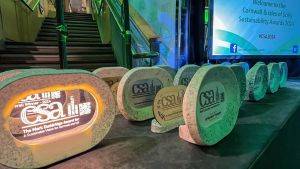Working for Wetlands in South Africa
Introduction
South Africa is a semi-arid country with an average annual precipitation of 497mm – significantly lower than the global average of 860mm. This means that peatlands occur mainly in the wetter eastern and southern parts of the country. Evapotranspiration exceeds precipitation in most parts and peatlands are therefore groundwater dependant.
Description
Wetlands, including mires and peatlands, have been extensively used as an agricultural resource in South Africa. Practices such as damming, draining, cultivation, pasture and overgrazing have severely degraded about 50 % of the country’s wetlands. For example: •The Palmiet (Prenomium serratum) fens in the Cape Fold Mountains are eroding due to overgrazing in the catchment area and the drainage of the peatlands for orchids. •Drained peat swamp forests are used for banana plantations in the rural communities on the eastern subtropical coastal plain. •In the Highveld plateau, peatlands are burnt and dried out as a result of timber expansion (e.g. Eucalyptus) or irrigation schemes.
Project Aims
The South African government has acknowledged that wetlands provide valuable ecosystem services, and has recognised that a high level of wetland loss and degradation occur in the country. A wetland rehabilitation initiative called Working for Wetlands was established within the South African National Biodiversity Institute. It is the vision of Working for Wetlands to facilitate the conservation, rehabilitation and sustainable use of wetland ecosystems, in accordance with South Africa's national policy and commitment to international conventions and regional partnerships. Working for Wetlands combines the provision of work, training and opportunities to the poorest of the poor with the rehabilitation of wetlands. During 2004-2013 the programme received a budget of about US$63million and created around 15,000 jobs (resulting in two million actual person days of work and 190,000 days of training) with women comprising approximately 60% of the work force. Working for Wetlands combines proactive preventative measures (e.g. erosion control) with remedial interventions (e.g. rewetting) and focuses on the conservation of 20 peatlands. Rather than focusing exclusively on engineering solutions, the project aims to raise awareness and influence behaviour and practices that have an impact on wetland habitats. The aim is to maximise opportunities with respect to ecological integrity, water and food security, human well-being and poverty alleviation. The programme comprises of five key areas: 1.Wetland rehabilitation 2.Partnerships 3.Communication, education and public awareness 4.Capacity building 5.Research and planning
Site Activity
Rehabilitation and good management of wetlands, such as peatlands, can generate multiple benefits, including poverty alleviation, combating of land degradation, maintaining biodiversity and mitigating climate change. Recognising this, and even though peatlands only make up a fraction of South Africa’s wetlands, 40% of all rehabilitation projects undertaken by the Working for Wetlands Programme have targeted peatlands or their catchments.
Project Name: Working for Wetlands in South Africa
Organisation / Lead partner: Working for Wetlands
Predominately: Upland










